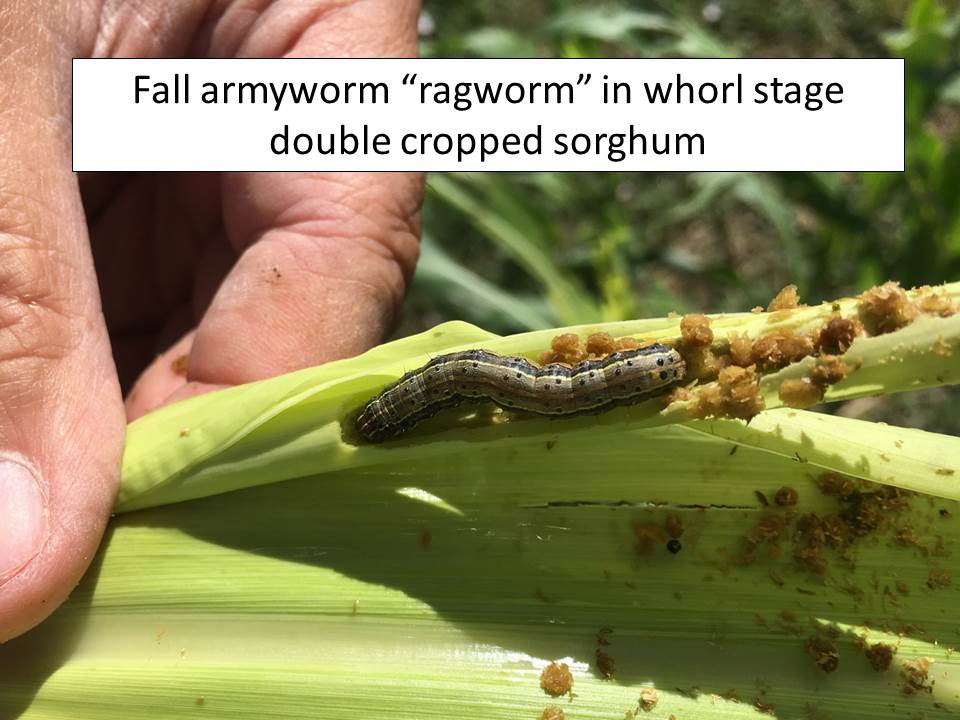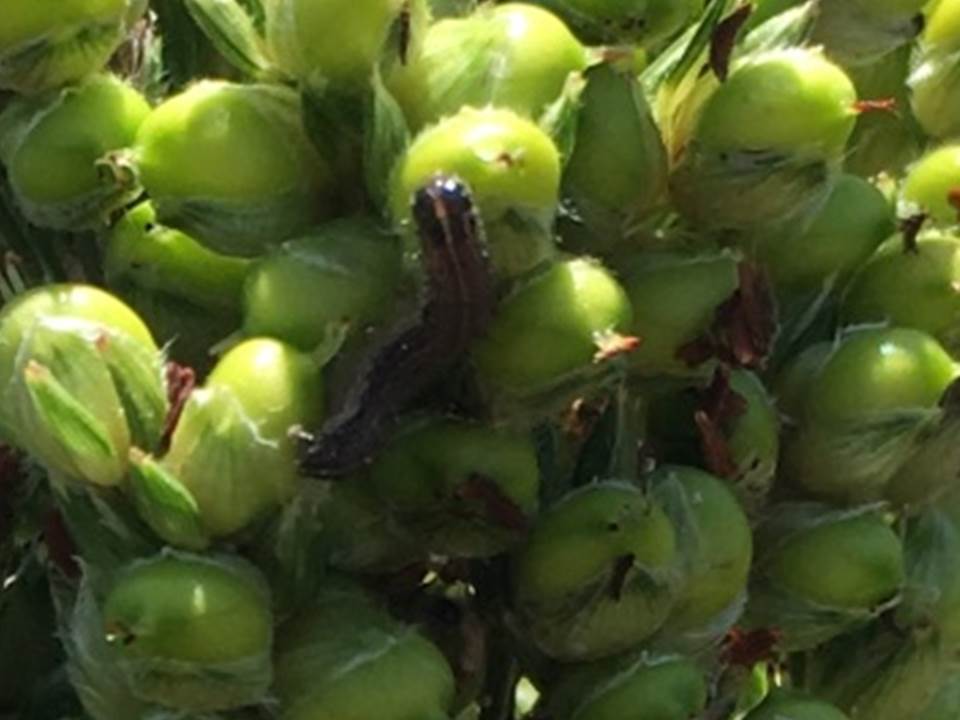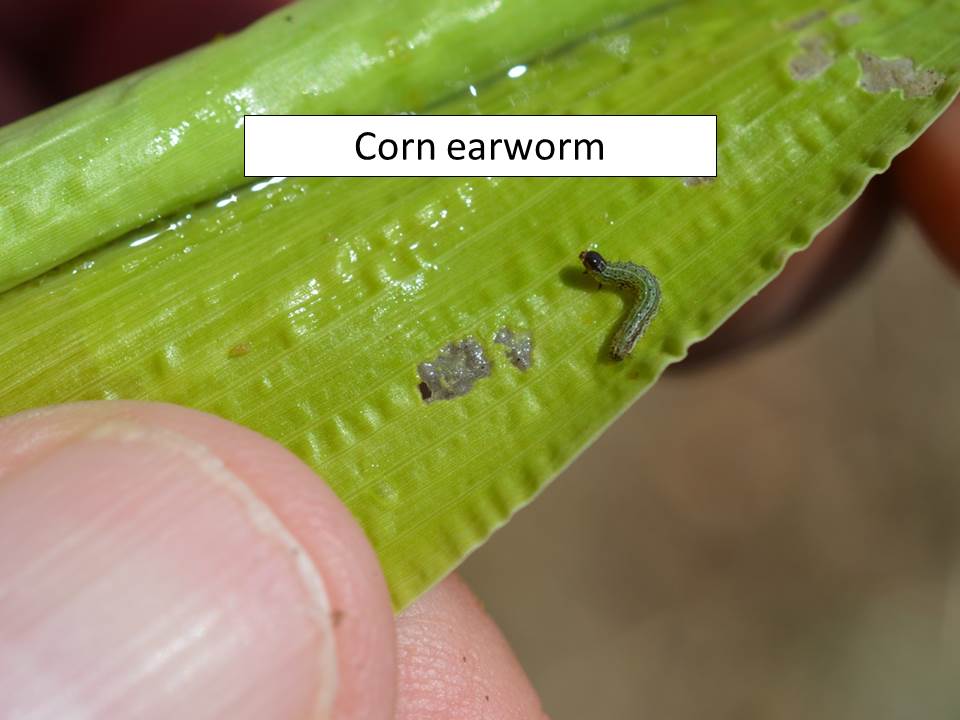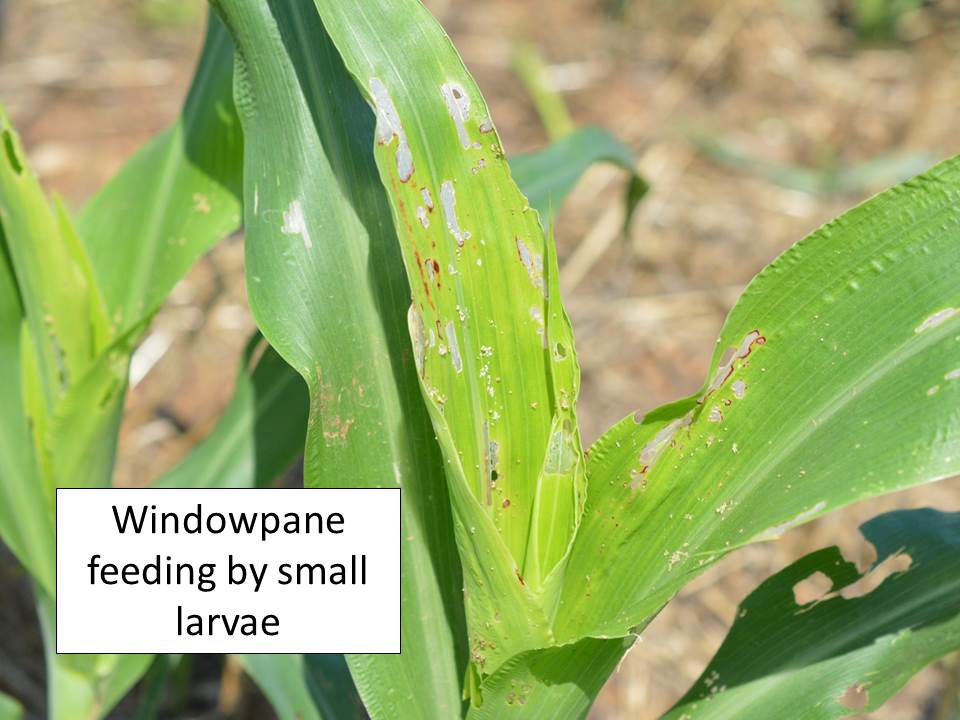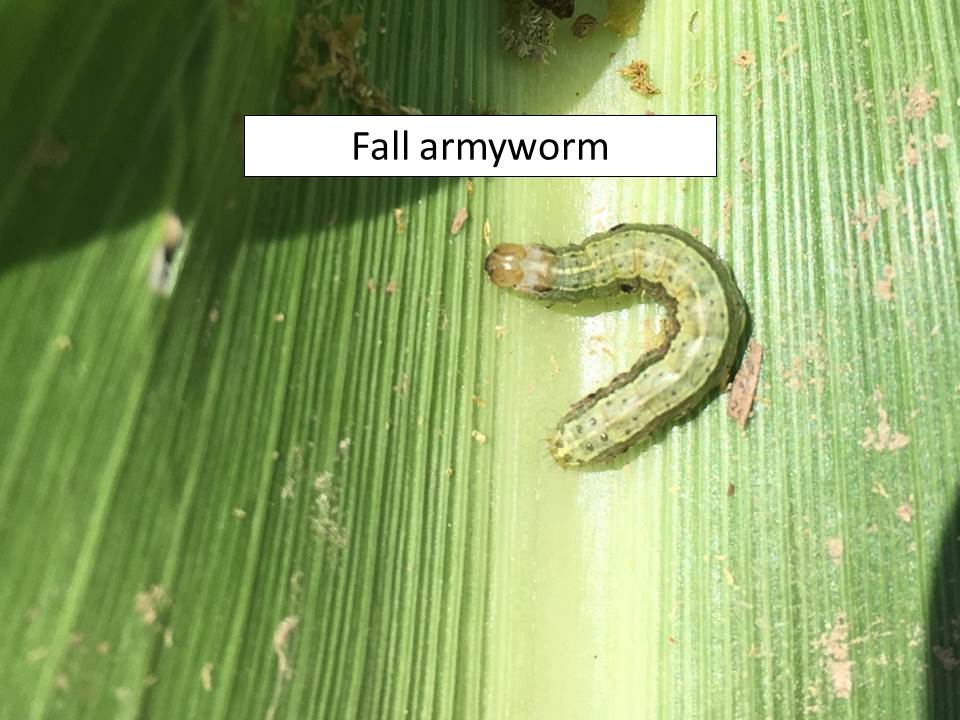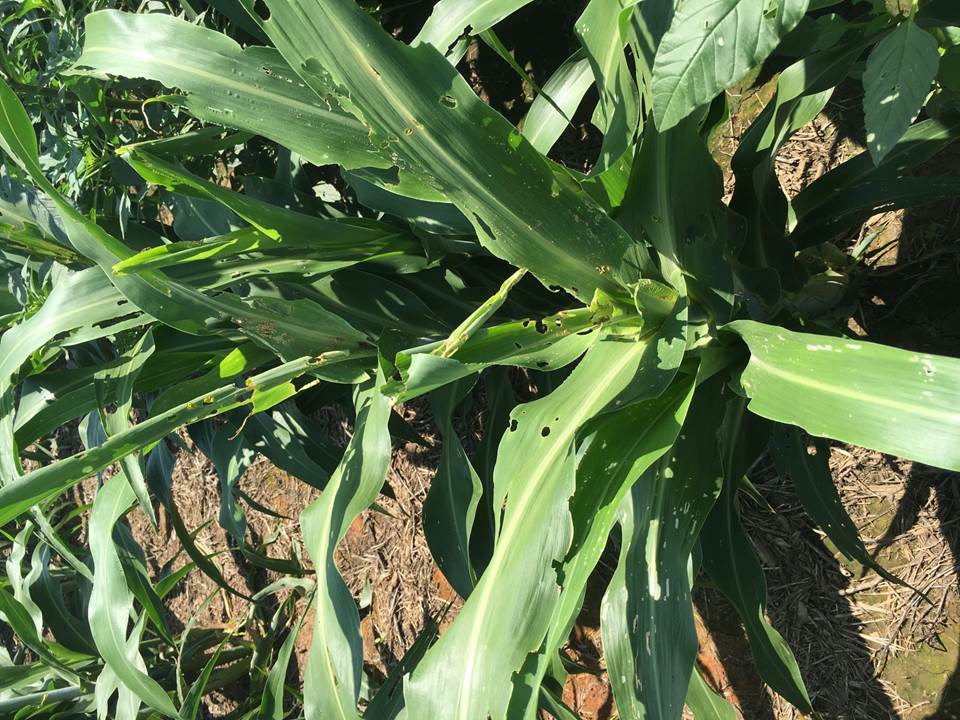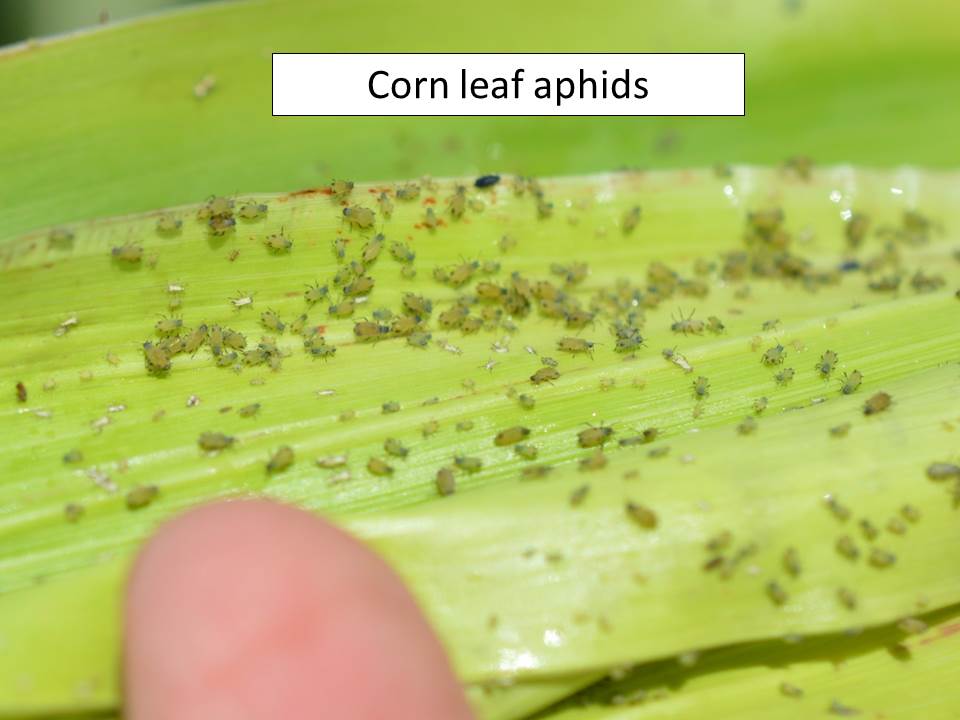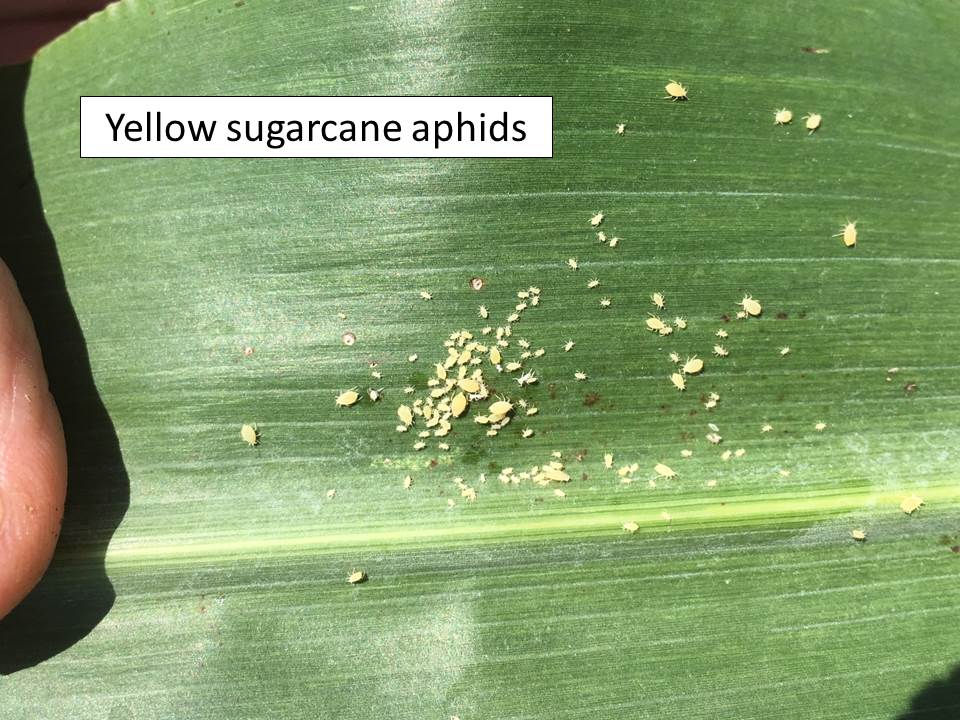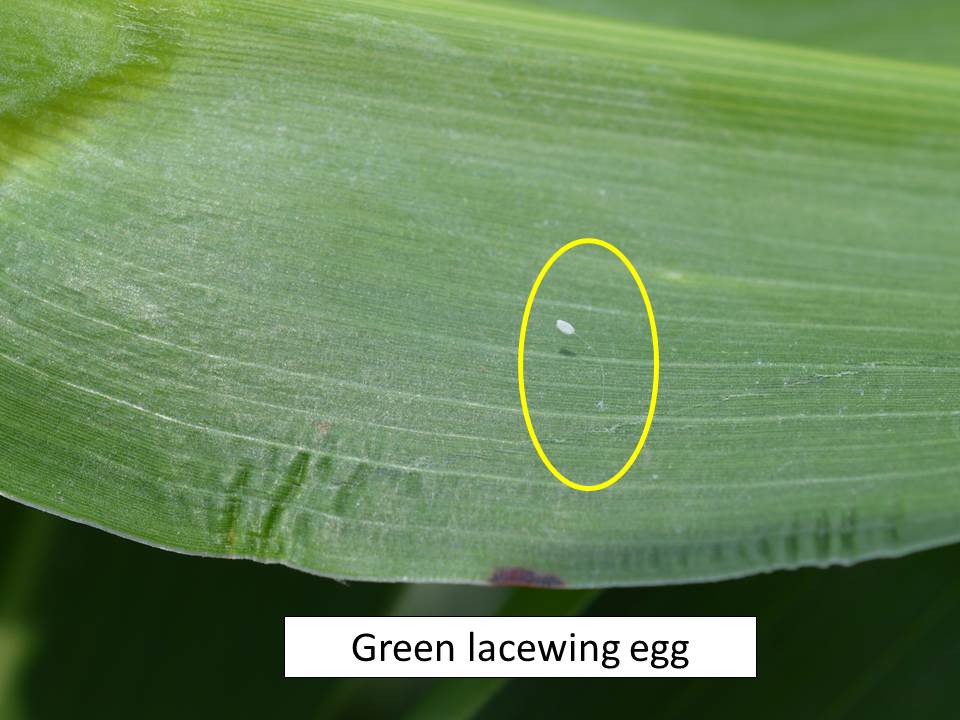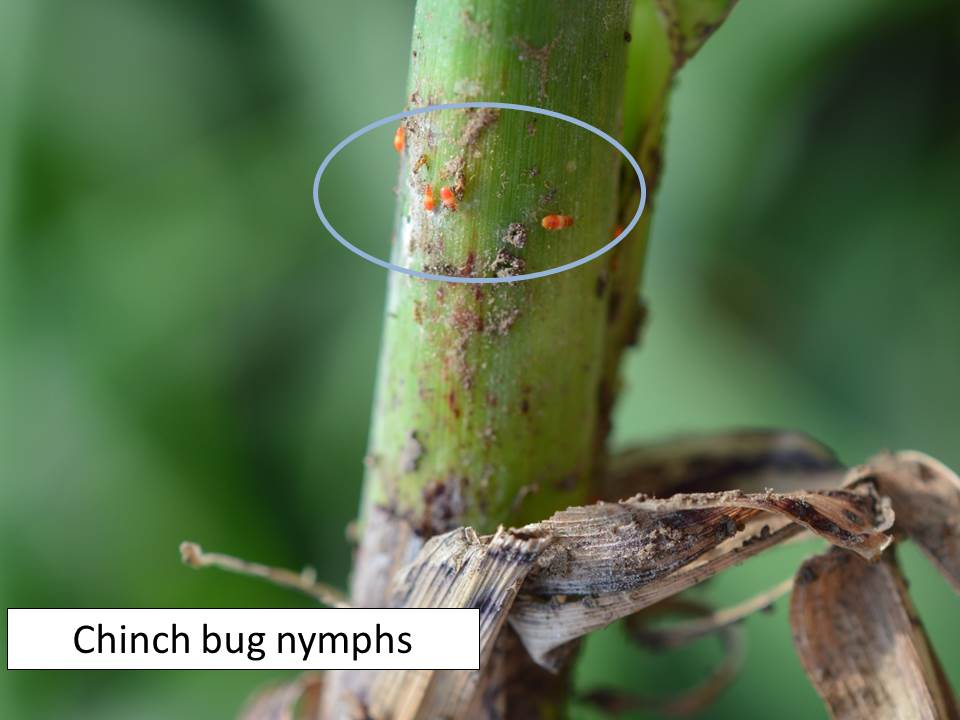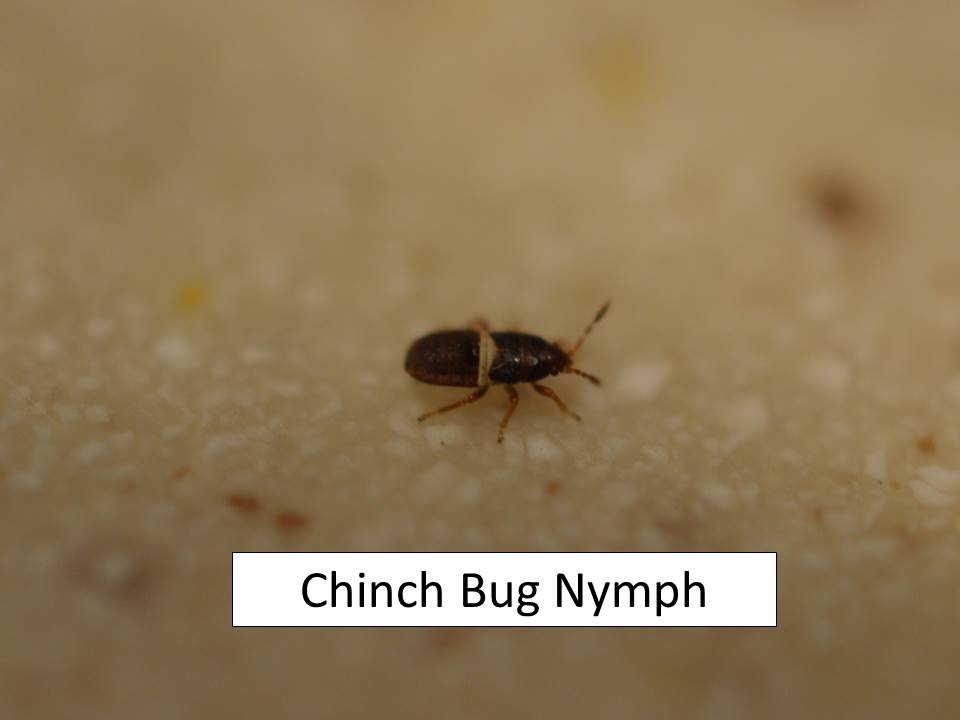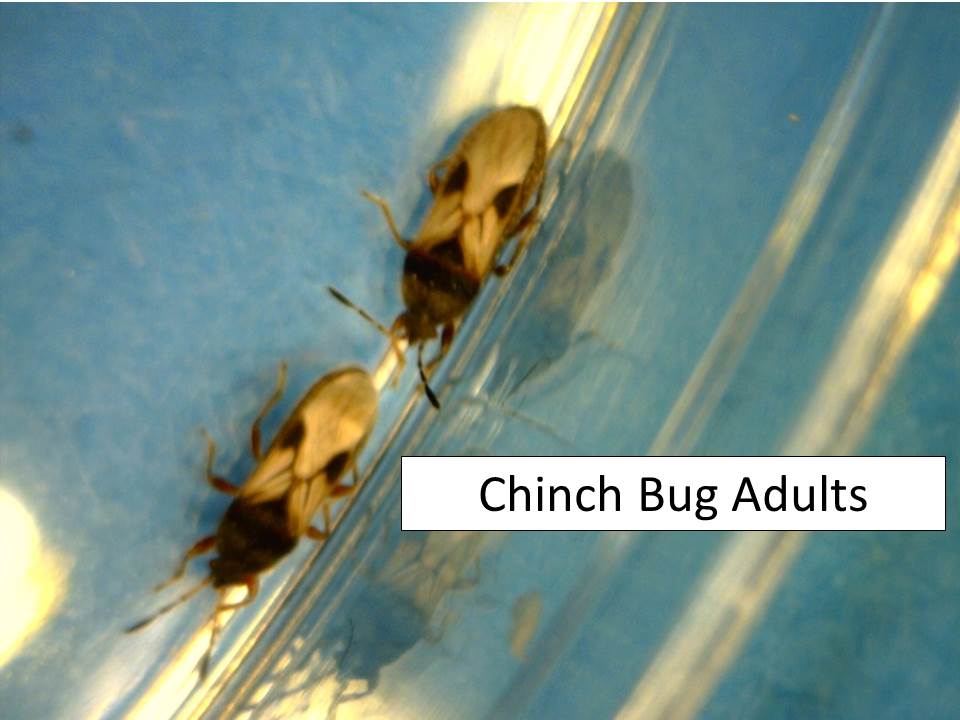—by the KSRE Field Crop Extension Entomology Team
Our team has been actively scouting sorghum fields the past few weeks for any infestations of sugarcane aphid, which is a relatively new pest affecting Kansas sorghum. We received a report from Jill Zimmerman (KSRE Extension Agent, Cowley County, KS) on July 18, 2016 of a potential infestation in a commercial field near the Sumner/Cowley County border; the report was confirmed in two fields this morning by a state specialist. Based on the size of the aphid populations observed, which included several plants that were producing winged aphids (i.e., alates), this field was first infested approximately 3-4 weeks ago. A significant number of natural enemies were observed feeding on aphids, which can help to slow aphid growth.
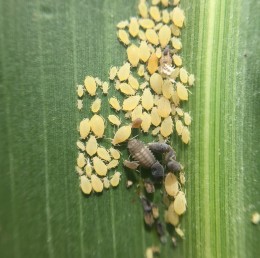
Sugarcane aphid populations have been slow to build in Texas and Oklahoma this growing season. This record is approximately 10 days sooner than when we found aphids in 2015. Aphid densities are well below threshold, but those with sorghum fields are encouraged to scout fields now.
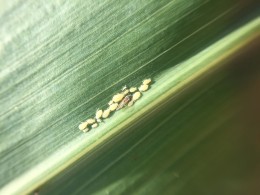
Report all new infestations by contacting your county extension agent. For myFields.info users, submit reports using the Pest Sampler module (https://www.myfields.info/pest_sampler). To receive pest alerts about sugarcane aphid, create an account (https://www.myfields.info/user/register) and include your state and county information to receive notifications specific to your area.
For more information on sampling procedures, action thresholds, or effective insecticides, visit https://www.myfields.info/sca.
Scout early, scout often, and know before you spray.


